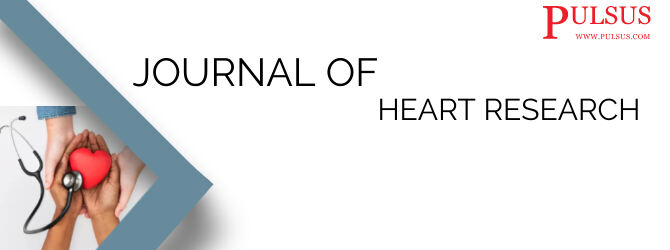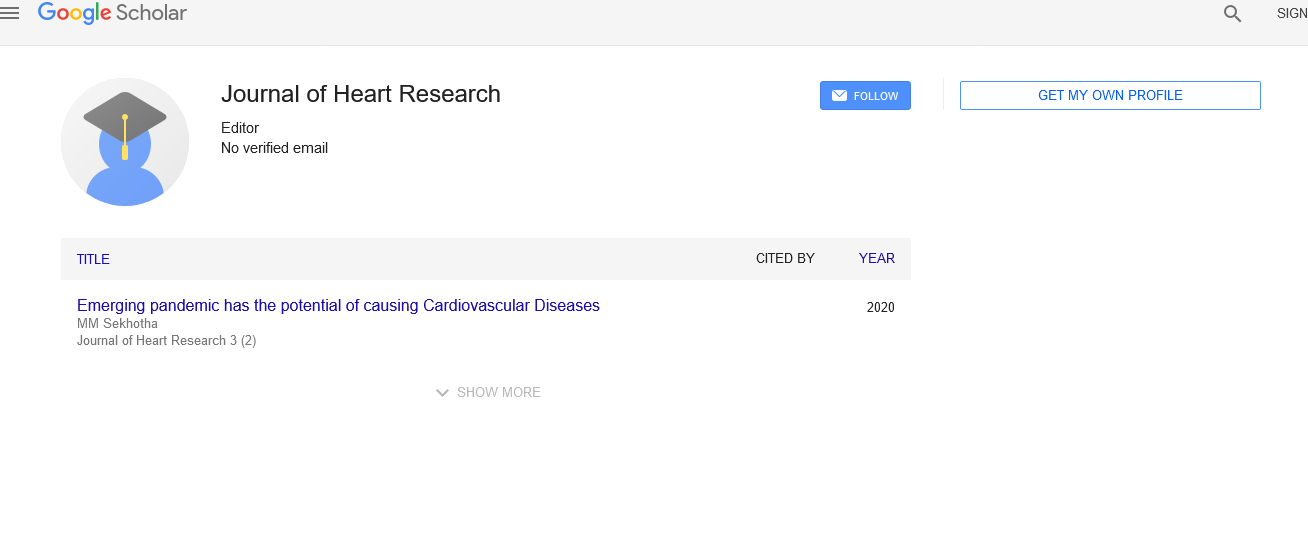a brief note on atrial fibrillation and its causes
Received: 03-Dec-2021 Accepted Date: Dec 17, 2021; Published: 24-Dec-2021, DOI: 10.37532/ puljhr.2022.6(1).01-02
This open-access article is distributed under the terms of the Creative Commons Attribution Non-Commercial License (CC BY-NC) (http://creativecommons.org/licenses/by-nc/4.0/), which permits reuse, distribution and reproduction of the article, provided that the original work is properly cited and the reuse is restricted to noncommercial purposes. For commercial reuse, contact reprints@pulsus.com
Editorial
A trial fibrillation (AF or A-fib) is an abnormal heartbeat (arrhythmia) characterized by rapid and abnormal beating of the coronary arteries. It usually starts as short periods of abnormal, long or continuous beating over time. It may also start as other forms of arrhythmia such as atrial flutter that changes to AF. Episodes can be asymptomatic. Symptoms of symptoms may include palpitations, fainting, lightheadedness, shortness of breath, or chest pain. Atrial fibrillation is associated with an increased risk of heart failure, dementia, and stroke. It is a form of supraventricular tachycardia.
High blood pressure and valvular heart disease are the most common risk factors for AF. [Other cardiovascular risk factors include heart failure, cardiovascular disease, heart disease, and congenital heart disease. In lowand middle-income countries, valvular heart disease is usually caused by rheumatic fever. Dangerous lung-related factors include COPD, obesity, and sleep disorders. Other risk factors include alcohol abuse, smoking, diabetes, and thyrotoxicosis. However, about half the cases are not associated with any of the above. Health professionals may suspect AF after hearing a heartbeat and confirm a diagnosis by interpreting an electrocardiogram (ECG). Normal ECG in AF shows QRS structures that are irregularly separated from P waves.
Changes in a healthy lifestyle, such as weight loss in overweight people, increased exercise, and less alcohol consumption, can reduce the risk of atrial fibrillation and reduce its burden if possible. AF is usually treated with medication to reduce the heart rate to a near-normal level (known as controlling heart rate) or to convert rhythm to normal sinus rhythm (also known as rhythm control). Electrical cardioversion can convert AF to normal heart rate and is often needed for immediate use if a person is unstable.
Abortion may prevent some recurrences. For those at low risk of stroke, AF does not really require blood thinners although some health care providers may prescribe aspirin or anti-depressant medication. For those at higher risk, experts often recommend anticoagulants. Antiretroviral drugs include warfarin and oral oral anticoagulants. Most people are at high risk of stroke. Although these drugs reduce the risk of stroke, they increase the risk of severe bleeding.
Atrial fibrillation is the most common cardiovascular disease and, since 2020, affects more than 33 million people worldwide. Since 2014, it has affected about 2 to 3% of the population in Europe and North America. This was an increase from 0.4 to 1% of the population in 2005. In developing countries, about 0.6% of men and 0.4% of women are affected. Percentage of people with AF increases as age at 0.1% under 50, 4% between 60 and 70 years of age, and 14% over 80 years of age. A-fib and atrial flutter led to 193,300 deaths in 2015, rising from 29,000 in 1990. The first known report of an unusual heartbeat was Jean-Baptiste de Sénac in 1749. Thomas Lewis was the first physician to write this on the ECG in 1909 AF is often accompanied by symptoms associated with rapid heartbeat. The abnormal heart rhythm (arrhythmia) is sometimes only identified with the onset of a stroke or a transient ischemic attack (TIA). It is not uncommon for a person to first become aware of AF from a routine physical examination or electrocardiogram, as it often does not cause symptoms.
Acknowledgement
None
Conflict of Interest
None





